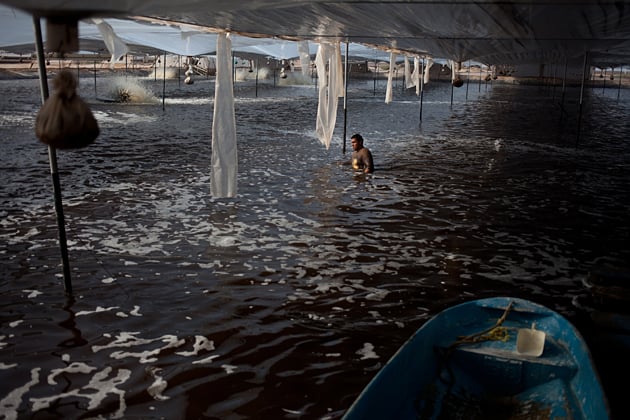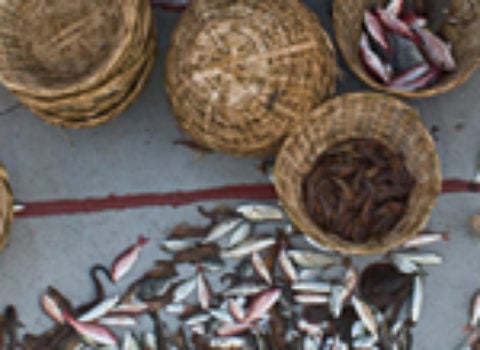On the Trouble with Farmed Shrimp
The Mexican government announces a state of emergency following a mass shrimp die-off in the Sea of Cortez
Last Thursday, Mexican officials announced that the country’s shrimp farms were in a state of emergency. According to news reports, a combination of heavy-metal pollution and widespread disease in the hundreds of thousands of acres of shrimp farms lining the Sea of Cortez has torpedoed this summer’s crop.
An estimated 90 percent of Mexico’s shrimp farms are on the Sea of Cortez, and they have struggled for years with a series of diseases. When Dominic Bracco and I arrived in Kino to report our story for the August issue of Harper’s, producers were still working to recover. “You see these ponds?” asked Alfonso Apodaca Vazquez, a manager at the La Borbolla shrimp farm. “There are about twelve shrimp per square meter. Usually there are at least thirty.”
The problem isn’t limited to Mexico. China, Malaysia, Thailand, and Vietnam, all huge producers of shrimp for the United States, have struggled with something called early mortality syndrome (EMS) in shrimp. It’s not clear yet if the same affliction is hitting Mexican shrimp, but the news reports suggested that shrimp in the Sea of Cortez’s ponds die are dying before they are thirty days old. (Shrimp need a few months, at a minimum, to be big enough to eat.)
Many scientists and environmentalists have been looking to aquaculture — fish farming — as a potential savior for today’s radically diminished wild-fish stocks. Indeed, aquaculture in the crucial Mexican states of Sinaloa and Sonora has doubled every few years over the past decade. In Harper’s, I pointed out that farmed salmon, shrimp, and tuna require massive amounts of fishmeal, which is usually harvested from wild populations. The recent news displays another problem that I didn’t mention, but that is equally problematic: cramming thirty shrimp into one square meter is a little like putting thousands of people into unsanitary prison camps. Disease runs rampant.
Traditionally, there are several ways to address this issue, none of them ideal. The first is simply to desert the ponds as soon as diseases appear, then build a new one instead. This practice is common in Southeast Asia, and it occasionally happens in the mangrove forests of Nayarit and Sinaloa, too. But La Borbolla, one of the most environmentally sensitive farms in the regions, isn’t built on destroyed mangroves, and it isn’t easily moved. Instead, Mexican farms tend to rely on antibiotics, administered via fishmeal. But disease adapts quickly to antibiotics, and it’s a constant struggle to keep producing drugs that can combat the diseases.
Ironically, Mexico’s state of emergency was announced less than three weeks after the United States verified that it would certify Mexican wild-caught shrimp imports as environmentally sound. Hundreds of loggerhead turtles were dying after becoming tangled in the nets of the Mexican fishing fleet. (For perspective, the entire Hawaiian fleet is allowed only seventeen accidental turtle deaths per season.)
Though the two issues are different in nature, both suggest that the United States can ill afford to ban wild-caught shrimp from Mexico; it is the seventh-largest foreign source of shrimp for the United States, and the nearest major supplier. Already the U.S. government has signaled that it might wave tariffs for several large Asian shrimp providers who have been hampered by early mortality syndrome. The reason for this friendliness is that we need these shrimp farms in order to meet America’s massive appetite for its favorite seafood. But as farms attempt to fulfill that demand, they will have to find better ways of warding off disease.





